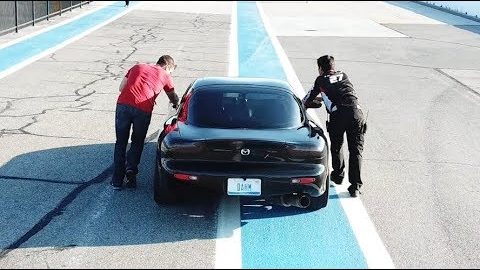How does a drag car perform on a road course?

We all know there’s a huge difference in the way you set a car up for a trip to the drag strip versus the setup you run for a day at the road course or autocross, but if you’re anything like us, you’ve likely wondered how a car set up for one type of racing would do if you pushed it to the limits in the other disciplines. Well now we can tell you with some awesome video for proof.
YouTuber Rob Dahm is competing in a multi-discipline battle with four other YouTube stars to see who can build a budget-friendly ride that can do it all without making changes to the car to swap between tracks. Dahm’s car, a nasty sounding three-rotor Mazda RX7, is built to perform in a straight line, but the platform inherently handles pretty well, although Rob did himself no favors by showing up with meaty drag radials on the rear wheels. Coupling the tire choice with the car’s off-then-on power band made for a tricky edge-of-control type day for professional driver Justin Bell, who took all five cars around the track to keep a level playing field.
Bell’s feedback on the car was surprisingly not as bad as one might think, especially considering he’s thrown some of the baddest cars on the planet around the trickiest of turns at max speed for the better part of his life. After calling out the rear tires – built for straight-line acceleration and not much more – for being less than good around the curves, Bell admitted the car actually wasn’t as bad as he’d expected. While he usually just needs a few laps behind the wheel of a car to get a feel for how to best finesse it around the track, Bell joked it would take him a year to get used to the snappy power band of the RX7.
With the road course portion of the challenge out of the way, look for Dahm’s car to be little more at home for the rest of the challenge, especially when they head to the drag strip, the place where the 3-rotor should really shine.

